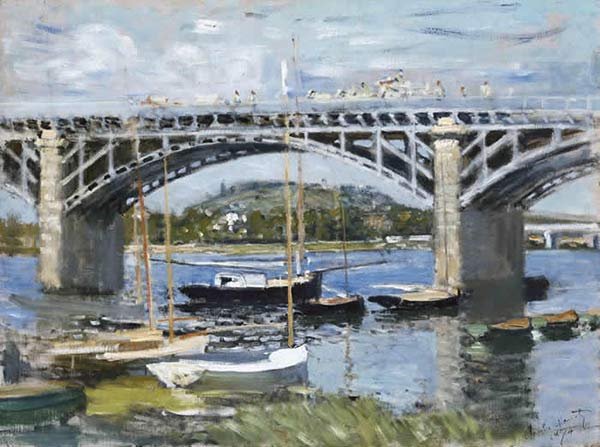Twelve seminal works from the master of Impressionism have just landed at the National Gallery of Canada.
Although the works by Claude Monet (1840-1926) display a diverse range of subjects, his views of bridges earn the spotlight in a current exhibition at the National Gallery of Canada in Ottawa, Ontario. “Monet: A Bridge to Modernity” explores a tantalizing period in the artist’s career, between 1872 and 1875 in the aftermath of the Franco-Prussian War. Monet spent these three years in Argenteuil, a small town on the outskirts of Paris, where he meticulously captured the local bridges.

Claude Monet, “The Port at Argenteuil,” ca. 1872, oil on canvas, 60 x 80.5 cm. (c) Musée d’Orsay, Paris 2015
“Monet emerges as a methodical artist who used the local bridges to work out his aesthetic concerns,” the gallery says. “What resulted were compositions of startling modernity that cemented Monet’s status as one of the leaders of the avant-garde.” Twelve paintings by Monet will feature in the exhibition, along with photographs, illustrations, guidebooks, Japanese prints, and postcards. The exhibition is the first monographic of Monet’s work in Canada in nearly 20 years.
“Monet: A Bridge to Modernity” opened on October 29 and will be on view through February 15.
To learn more, visit the National Gallery of Canada.
This article was featured in Fine Art Today, a weekly e-newsletter from Fine Art Connoisseur magazine. To start receiving Fine Art Today for free, click here.








